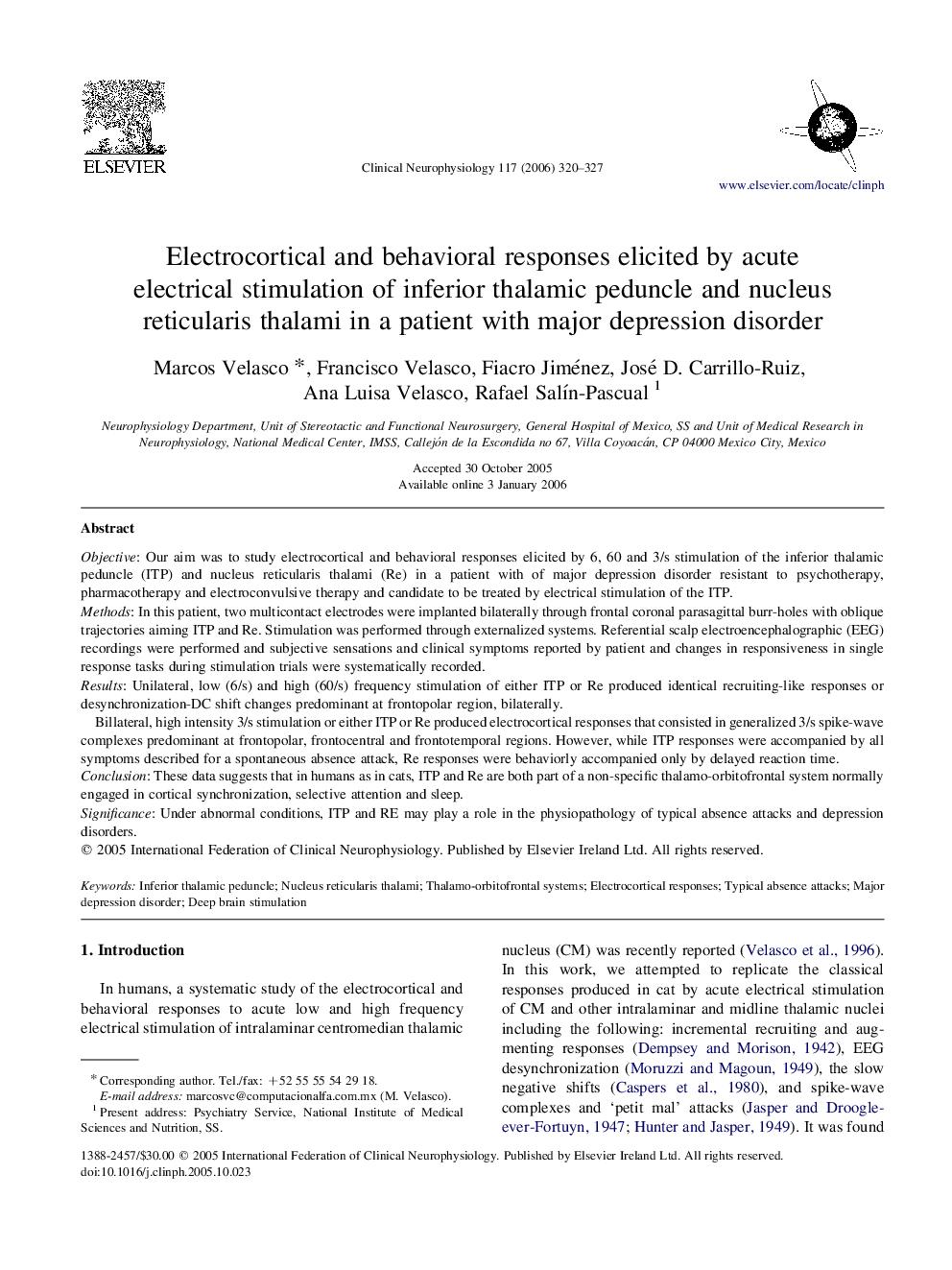| Article ID | Journal | Published Year | Pages | File Type |
|---|---|---|---|---|
| 3048138 | Clinical Neurophysiology | 2006 | 8 Pages |
ObjectiveOur aim was to study electrocortical and behavioral responses elicited by 6, 60 and 3/s stimulation of the inferior thalamic peduncle (ITP) and nucleus reticularis thalami (Re) in a patient with of major depression disorder resistant to psychotherapy, pharmacotherapy and electroconvulsive therapy and candidate to be treated by electrical stimulation of the ITP.MethodsIn this patient, two multicontact electrodes were implanted bilaterally through frontal coronal parasagittal burr-holes with oblique trajectories aiming ITP and Re. Stimulation was performed through externalized systems. Referential scalp electroencephalographic (EEG) recordings were performed and subjective sensations and clinical symptoms reported by patient and changes in responsiveness in single response tasks during stimulation trials were systematically recorded.ResultsUnilateral, low (6/s) and high (60/s) frequency stimulation of either ITP or Re produced identical recruiting-like responses or desynchronization-DC shift changes predominant at frontopolar region, bilaterally.Billateral, high intensity 3/s stimulation or either ITP or Re produced electrocortical responses that consisted in generalized 3/s spike-wave complexes predominant at frontopolar, frontocentral and frontotemporal regions. However, while ITP responses were accompanied by all symptoms described for a spontaneous absence attack, Re responses were behaviorly accompanied only by delayed reaction time.ConclusionThese data suggests that in humans as in cats, ITP and Re are both part of a non-specific thalamo-orbitofrontal system normally engaged in cortical synchronization, selective attention and sleep.SignificanceUnder abnormal conditions, ITP and RE may play a role in the physiopathology of typical absence attacks and depression disorders.
